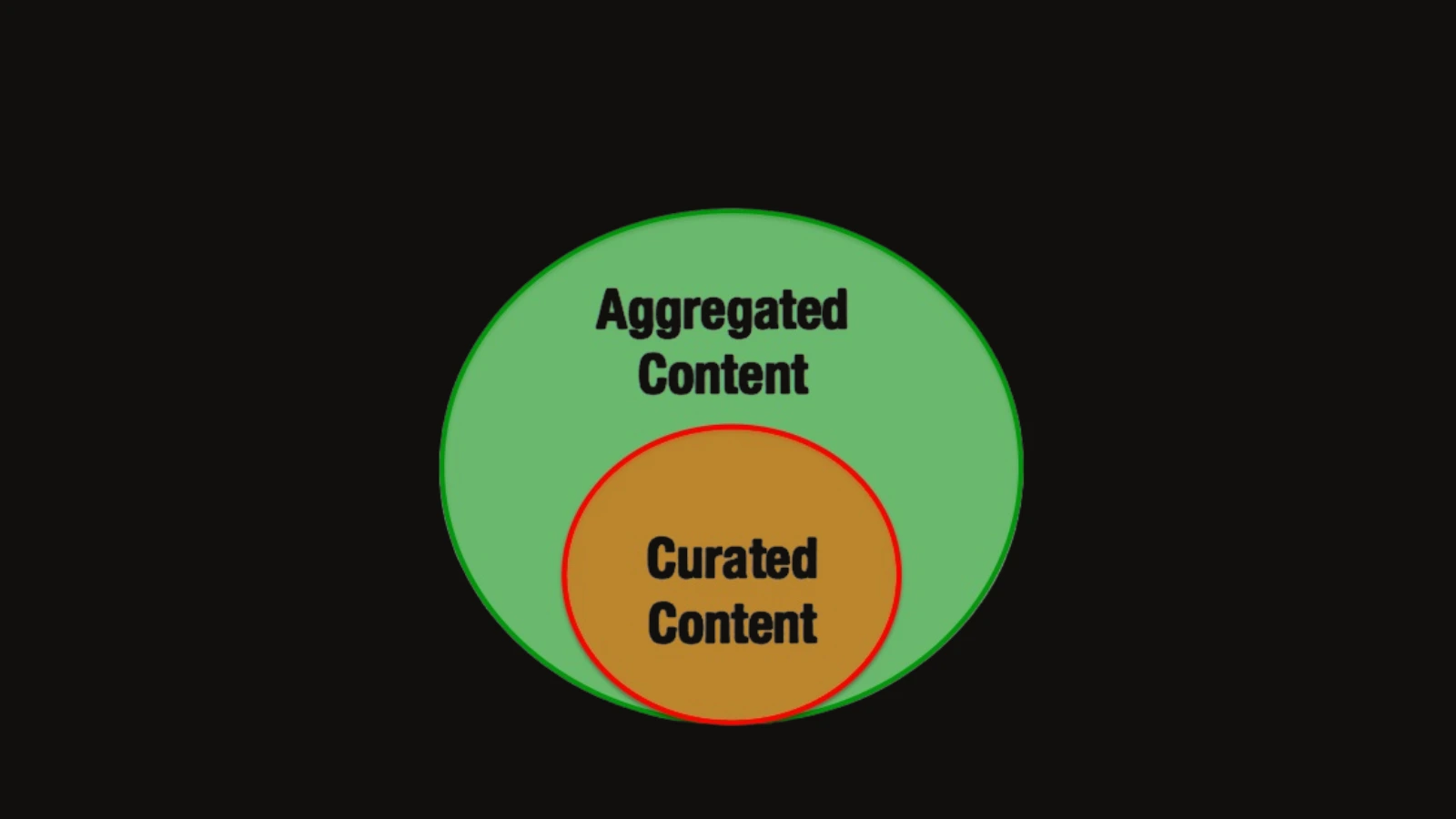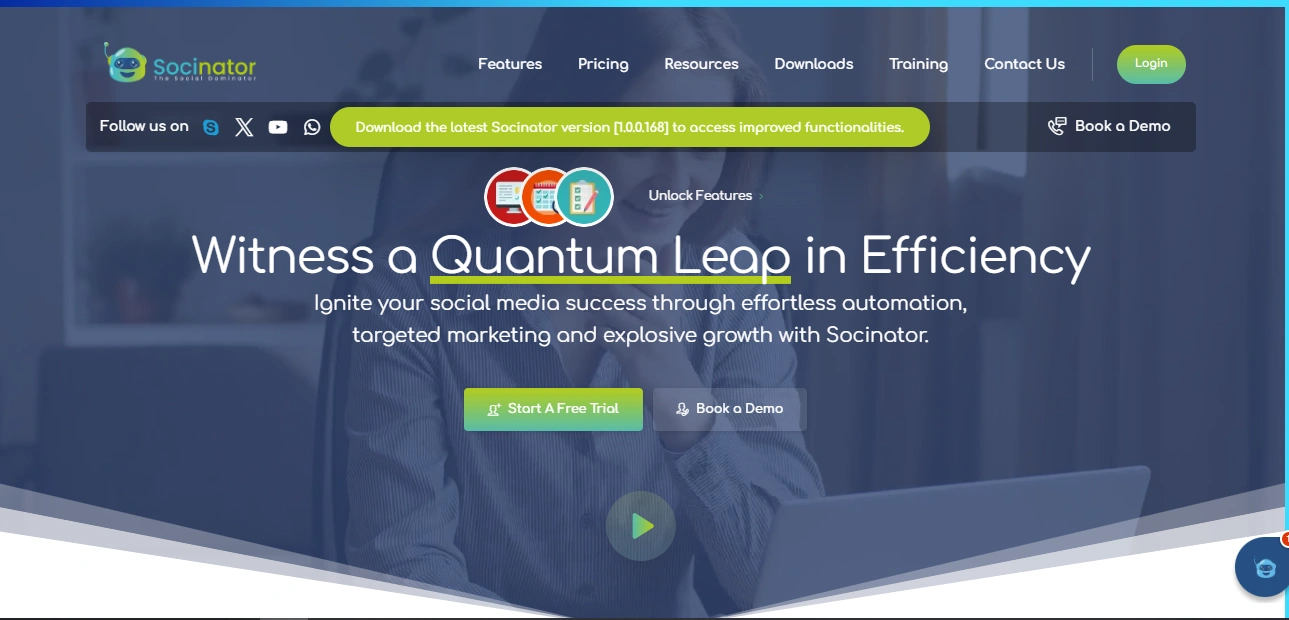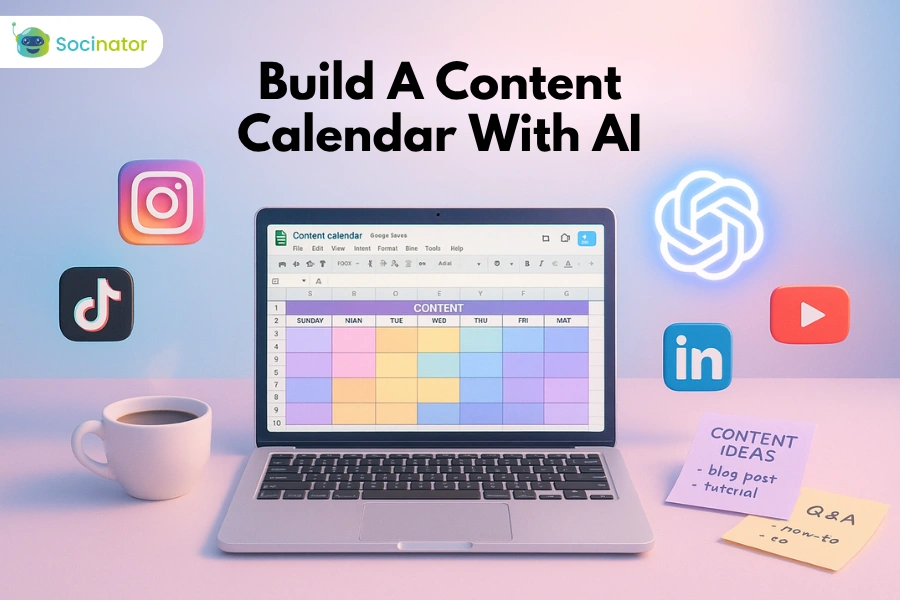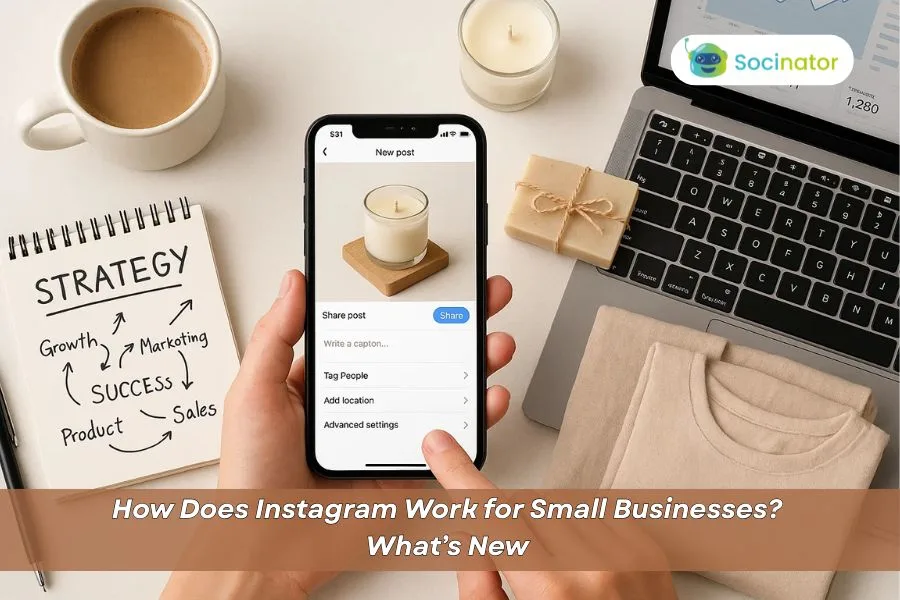Imagine you’re hosting a dinner party. You carefully choose the menu, considering the tastes and preferences of your guests to ensure everyone enjoys the meal. The same approach applies to content curation.
It’s about carefully selecting, organizing, and sharing only the most relevant and valuable content to your followers. Just like a museum curator picks the most important art pieces for an exhibition, marketers carefully choose content that resonates with their audience. But, with the sheer amount of content online, how do you separate the noise from what truly matters? That’s where content curation comes into play.
In this blog, we’ll dive deep into content curation, uncovering tips, examples, and methods that will help you enhance your marketing strategy and save valuable time. By the end, you’ll be well-equipped to use content curation to build your authority, engage your audience, and streamline your social media content creation process.
Let’s begin!
Listen To The Podcast Now!
What Is Content Curation?
 Content curation is discovering, collecting, and sharing valuable content from diverse sources that resonate with your audience’s interests and needs. The goal is to deliver valuable information to your followers that they may otherwise overlook in the overwhelming amount of digital content.
Content curation is discovering, collecting, and sharing valuable content from diverse sources that resonate with your audience’s interests and needs. The goal is to deliver valuable information to your followers that they may otherwise overlook in the overwhelming amount of digital content.
But content curation isn’t just about gathering links. Content curation is thoughtfully selecting pieces that offer value, introduce fresh perspectives, and provide reliable insights. Rather than merely collecting everything that crosses your path, it involves a deliberate and strategic approach to sharing meaningful content.
Content Curation vs. Content Aggregation: The Key Difference
One important distinction when discussing content curation is the difference between content curation and content aggregation. While both involve sharing external content, the approach is quite different.
Content aggregation is automated and driven by algorithms. Platforms like social media and news apps aggregate content based on set criteria, showing content likely to be popular or relevant to your interests. This process is fast and often lacks the personal touch.
On the other hand, content curation is a manual process. It involves selecting specific pieces of content based on their value, often with additional commentary or context. It’s the human touch that makes curation stand out. This makes curated content so special—it’s not just about what’s popular, but about what’s truly valuable.
Benefits Of Content Curation For Your Marketing Strategy
Why should you incorporate content curation into your marketing strategy? The benefits are numerous. Here are a few key ones that highlight its importance:
- Builds Relationships with Content Creators: Curating content from other creators doesn’t just provide value to your audience—it also helps you create meaningful connections with the original creators, opening doors for future collaborations and networking opportunities.
- Establishes Authority: Sharing high-quality, relevant content regularly helps position you as a trusted source in your industry. You’ll be seen as someone who knows where to find the best insights and can provide value to their audience.
- Saves Time: Instead of constantly creating original content from scratch, curation allows you to share relevant material that already exists. This can help keep your social media feeds or blogs active without the pressure of constantly producing new content.
- Provides Value to Your Audience: At its best, content curation is about delivering value to your followers. By sharing the best content, you’re helping your audience stay informed and engaged with the topics they care about.
If you’re looking for professional college essay writers, curation helps guide you to resources that can provide reliable insights, saving you time and improving the quality of your research.
You have explored the benefits, now it’s time to master content curation strategies.
Content Curation Tips: How To Curate Like a Pro
These are the following tips and strategies you can follow
Step 1: Understand Your Audience
Before diving into content curation, it’s essential to have a deep understanding of your audience. The key to effective curation lies in knowing what your followers care about, their challenges, and their interests. This knowledge will help you choose and share content that resonates with them.
Research Your Audience
Gather insights into your audience’s demographics, behaviors, and interests. Use surveys, social media insights, or analytics tools to gather data. This helps you better understand your audience and refine your content curation strategy for maximum impact.
Develop Audience Personas
Create detailed audience personas to represent different segments of your followers. These personas should include age, job title, preferences, challenges, and key goals. By keeping these personas in mind, you’ll be able to select content that is more targeted and relevant to each group.
Monitor Audience Engagement
Consistently check audience engagement through comments, direct messages, and other forms of feedback. This helps you identify the types of content your audience appreciates and what areas they want more of. Use this information to adjust and improve your curation strategy.
Step 2: Select Trusted Sources
The quality of the content you share is directly influenced by the credibility of your sources. To maintain trust with your audience, it’s vital to rely on reputable websites, influencers, and industry thought leaders when curating content. Tools like Feedly, Pocket, and Flipboard can help you organize and manage multiple sources efficiently.
Evaluate Your Sources
Not all sources are equal in quality. Take time to vet each source for reliability, looking into the author’s expertise, the website’s reputation, and the accuracy of the information. By ensuring the credibility of your sources, you’ll maintain the trust of your audience.
Diversify Your Sources
Avoid relying on just one or two sources for your curated content. Gathering information from a variety of trusted sources allows you to offer your audience a more comprehensive and diverse selection of content. This approach also ensures you cover all angles and keep things fresh.
Utilize Content Aggregators
Content aggregators like Feedly or Flipboard allow you to stay on top of multiple sources in one place, helping you stay organized. These platforms provide easy access to the latest articles, blog posts, and videos across different topics so you can streamline your curation process.
Step 3: Develop a Clear Content Curation Strategy
Set Clear Goals
To make your content curation efforts more effective, define what you want to achieve. Whether your goal is to drive more traffic, increase social media engagement, or position your brand as an industry expert, having a clear goal will direct your efforts and help you measure success.
Make Your Goals SMART
You should set clear objectives that are well-defined, quantifiable, realistic, aligned with your needs, and have a set deadline. For instance, set a goal to increase engagement on your social media channels by 20% over the next three months through strategic content curation. This provides a specific target to focus on, making it easier to measure progress and adjust your approach.
Align Goals with Business Objectives
Your content curation goals should support your broader business objectives. For instance, if increasing brand awareness is a priority, focus on curating content that demonstrates your expertise, shares valuable industry insights, and highlights your thought leadership.
Reassess and Adjust Goals Regularly
Keep track of your goals and progress. As you curate content, check if your goals remain relevant and adjust them if needed. This curation ensures strategy stays aligned with your business needs and audience’s expectations.
Also Read
Creative and Tested Social Media Content Creation Strategies for 2024
9 Social Media Management Tips To Save Time & Improve Productivity
Step 4: Plan And Diversify Your Content Mix
A diverse content mix will ensure that your curated posts remain interesting and engaging to your audience. Strive for a balance of content types and topics that speak to different aspects of your audience’s interests and preferences.
Vary Content Formats
Different types of content appeal to various segments of your audience. Mix up your curated posts by sharing blog articles, videos, infographics, podcasts, and more. This variety keeps your content dynamic and ensures there’s something for everyone.
Address a Wide Range of Topics
Your audience likely has a broad set of interests within your niche. Aim to curate content on various topics that cater to these diverse needs. This not only engages your audience but also shows that you have a comprehensive understanding of your industry.
Balance Evergreen and Trending Content
To keep your content relevant now and in the future, include a balance of evergreen content (content that remains relevant over time) and trending content (the latest topics and news). This mix ensures that your posts are both timely and valuable in the long run.
Step 5: Maintain Consistency with a Posting Schedule
Consistency is crucial for a successful content curation strategy. Consistent posting helps maintain audience engagement and fosters trust gradually. Leveraging scheduling tools allows you to organize and automate content, ensuring a balanced and continuous presence without overwhelming your followers.
Leverage Scheduling Tools
Tools like socinator make it easy to plan your curated content ahead of time. These platforms allow you to schedule posts, ensuring content goes live at the right times, even if you’re busy with other tasks. They also help you track engagement and analyze your content’s performance.
Consistency Over Frequency
It’s better to post consistently than to overwhelm your audience with too much content. Find a posting rhythm that works for your audience, whether daily, weekly, or bi-weekly. Using scheduling tools ensures that you maintain this rhythm without the stress of constantly posting manually.
By applying these strategies and tools, you’ll be able to curate content more effectively, save time, and provide your audience with valuable information that strengthens your brand and deepens your connection with followers. Keep refining your approach as you go, and soon you’ll be known for consistently sharing the best and most relevant content in your industry.
Content Curation Examples: How Others Do It
To understand how content curation works in practice, let’s look at a few examples:
- Curating a Weekly Blog Post: Many brands and marketers create weekly round-up blog posts that feature the best articles, resources, or tools they’ve come across. These curated posts provide valuable insights to readers and keep them coming back for more.
- Email Newsletters: Content curation shines in the email newsletter world. By gathering the best content of the week and sharing it with subscribers, you can offer a digestible way for your audience to stay informed. Newsletters like Morning Brew do an excellent job of curating the top news and resources, providing value to their readers in a compact format.
- Social Media Curation: On platforms like Twitter, Instagram, or LinkedIn, curated content can be part of your regular posting schedule. Brands often share interesting articles, videos, or quotes from thought leaders in their industry to keep their followers engaged.
What Is Curated Content?
Curated content refers to carefully selected, organized, and shared material that resonates with your audience. Unlike content aggregation, which simply collects content automatically, curation involves a thoughtful approach—choosing high-quality, relevant pieces that add value. This can include articles, videos, infographics, or podcasts that align with your audience’s interests.
When you share curated content, you provide value by saving your audience time and effort. You’re helping them discover the best information available on topics that matter to them.
Best Practices for Efficient Content Curation
Curating content efficiently can seem daunting, but there are several ways to streamline the process:
- Use Content Curation Tools: Tools like Feedly, Pocket, and Curata make it easier to find, save, and organize content that fits your strategy. They can help you discover new content and keep track of valuable resources.
- Batch Your Curation: Rather than curating content throughout the day, set aside time each week to do it all at once. This helps you stay focused and organized, preventing the process from becoming overwhelming.
- Create a Content Calendar: Plan out your curated content in advance. A content calendar will help you stay organized and ensure your curated posts are diverse and relevant.
- Automate with Social Media Tools: Once you’ve curated content, schedule it ahead of time with a social media marketing tool. This allows you to maintain a steady flow of curated content without constantly posting in real time.
When automation comes, Socinator is the best choice for marketers, let us learn why Socinator is the best marketing automation software.
Socinator – Social Media Automation Tool
Managing social media content and engagement across multiple platforms can be overwhelming. With endless posts to share, comments to respond to, and connections to build, staying active online can feel like a full-time job. That’s where Socinator steps in. Designed to simplify your social media presence, Socinator automates key tasks, allowing you to focus on what truly matters—creating meaningful content and fostering real engagement. From scheduling posts to auto-replying to messages, Socinator ensures that your online presence stays strong without requiring constant manual effort.
Key Features:
Comprehensive Performance Reports
Track your profile activity, analyze engagement trends, and optimize your strategy for upcoming campaigns with detailed insights.
Automated Connection Requests
Expand your network effortlessly by automating connection requests. You can send, accept, or cancel them based on your target audience.
Engagement Automation (Likes & Comments)
Boost organic interactions by automating likes and comments. Stay engaged with your audience without spending hours on manual interactions.
Page Engagement Automation
Support and connect with relevant pages in your industry by automating likes, helping to grow your network and visibility.
Post Scheduling & RSS Automation
Maintain consistency by scheduling posts in advance or publishing directly from an RSS feed to keep your audience engaged.
Post Sharing Automation
Increase content visibility and reach by automating the sharing of relevant posts, ensuring they have access to a wider audience.
Event & Campaign Management
Stay on top of key events, product launches, and important dates with an automated event manager that keeps everything organized.
Broadcast Messaging
Send scheduled messages and announcements easily, ensuring timely communication without extra effort.
Auto-Reply to Messages
Keep conversations flowing with an auto-reply feature that responds to new messages instantly, ensuring you never miss an opportunity to engage.
With Socinator, content curation and engagement become seamless, allowing you to maintain a consistent and interactive online presence without the manual workload.
Wrapping Up
Content curation is a powerful tool for building authority, engaging your audience, and saving time. By carefully selecting and sharing the best content, you add value to your audience’s experience and position yourself as a trusted source of information.
Whether you’re sharing curated content in blog posts, email newsletters, or on social media, there are countless ways to integrate it into your marketing strategy. With the right tools and a thoughtful approach, content curation can be one of the most effective ways to keep your audience engaged while showcasing your expertise.
Now that you’ve learned the essentials of content curation, it’s time to get started! Consider your audience’s needs, select quality sources, and use automation tools to make your curation process even more efficient. With a little practice, you’ll soon be curating content like a pro.
FAQs
- How do I ensure my curated content remains unbiased?
To maintain neutrality in your curated content, source materials from a diverse range of perspectives, avoid promoting a single viewpoint excessively, and fact-check information before sharing. Providing a balanced mix of opinions helps establish credibility. - Can content curation help with SEO?
Content curation can enhance SEO by boosting engagement, driving traffic, and generating valuable backlinks. When you share valuable insights and link to authoritative sources, your credibility improves, improving search rankings. - How do I measure the success of my content curation efforts?
You can track success using key metrics like engagement (likes, shares, comments), website traffic from curated links, follower growth, and email open rates (if using newsletters). Tools like Google Analytics and social media insights can help assess performance.









